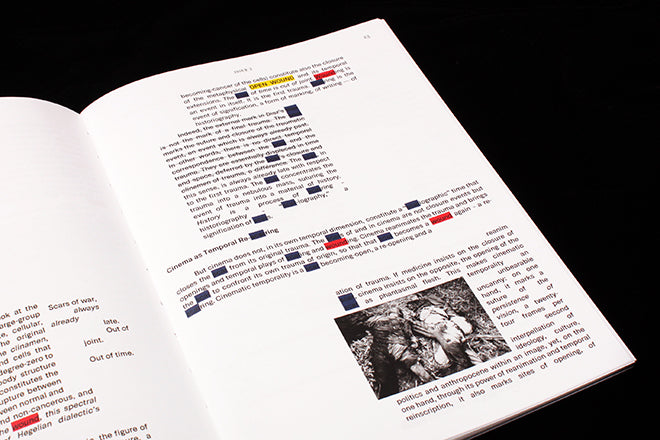
Nang #2
This week’s Page 23 takes a close-up look at issue two of Nang, the bi-annual magazine dedicated to cinema in Asia. Nang has taken a sharp thematic turn since it’s first issue on screenwriting, delving into the murky waters of scars and death for its second issue.
Page 23 falls two pages into Adrian D. Mendizabal’s piece, ‘“What is a Scar?”: A Spectral Study’, an essay that focuses on the life and works of Filipino filmmaker Lav Diaz through the study of trauma. This trauma establishes itself both as Diaz’s possible physical scarring, and the cultural scars he revisits in his films.
The first thing to note about this page is its form, which manifests its subject; blocked-out words, crossed-out lines, and paragraphs that slide back and forth across the page to symbolize trauma. The abject is embodied by the loud absence of words and phrases, that we are in turn drawn to.
The piece picks up pace on page 23, as its focus moves from Diaz’s presumed scar on his chest (the result of an operation to treat lung cancer), to ‘cinema as temporal re-scarring’, and the act of revisiting and re-opening wounds. The page discusses the lack of temporal correspondence between a scar, and the trauma that caused it, and begins to talk about Diaz’s own relationship with time and trauma in his work. Diaz is a pioneer of slow cinema, and has created some of the longest films ever made, most notably his 10 hour 30 minute long ‘Evolution of a Filipino Family’.
Page 23 is an intriguing point to begin at, as structurally it is the crux of the piece, whereas the proceeding pages were the suture. On the following pages, the text disintegrates further, words merge into one another, and the piece does not resolve itself. It is, in essence, a trauma in itself.


